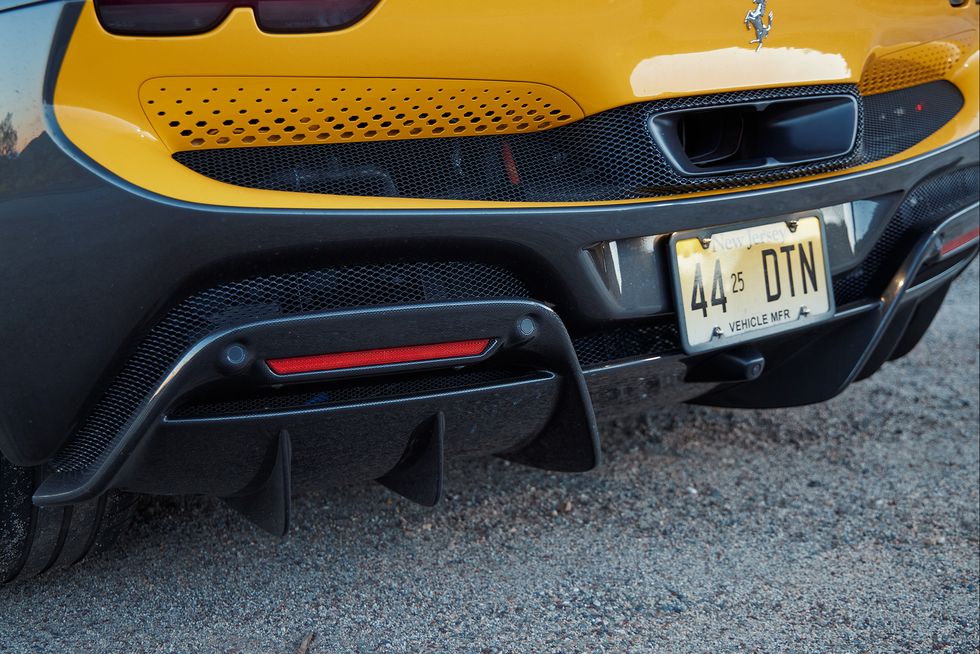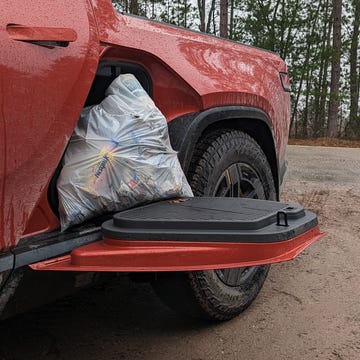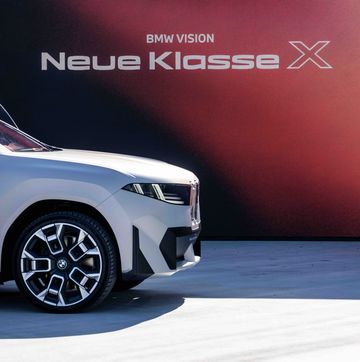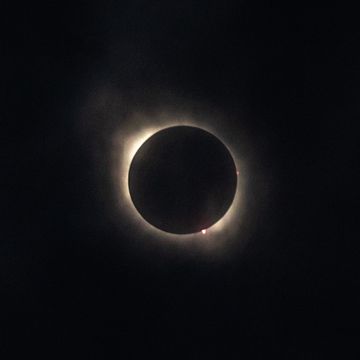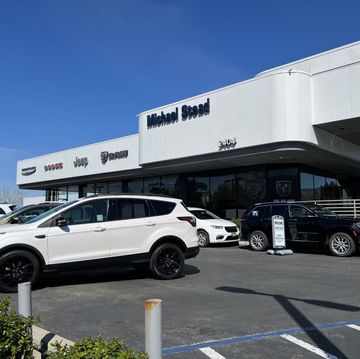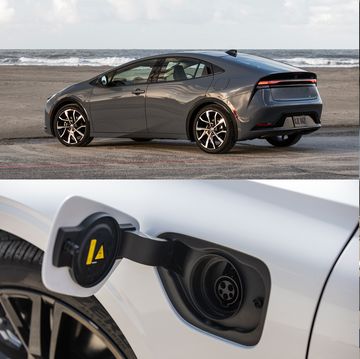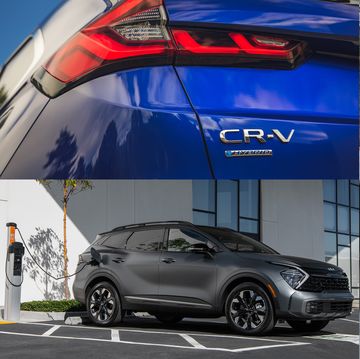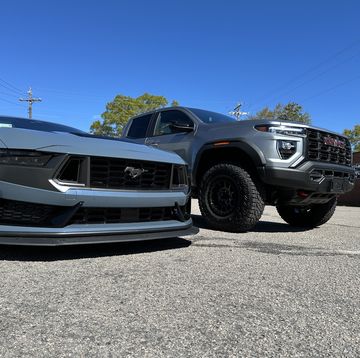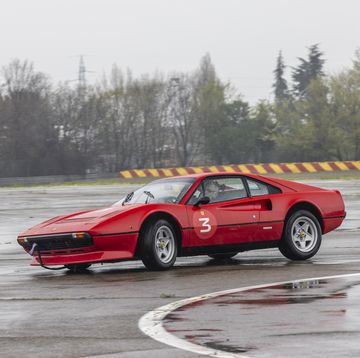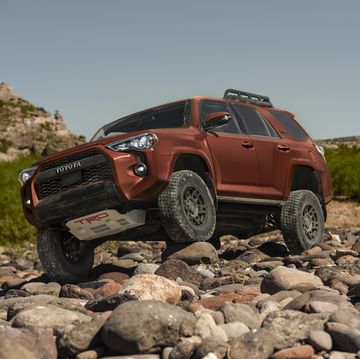From the March/April issue of Car and Driver.
Flavio Manzoni holds the title of chief design officer for Ferrari, a position both enviable and intimidating. Manzoni has been at Ferrari since 2010, and his portfolio includes the F12 Berlinetta and the LaFerrari. Manzoni took a break from penning the next great prancing horse to talk to about the 296GTB.
C/D: You studied architecture; how did that transition into car design?
Flavio Manzoni: It's a bit complicated. When I was young I really liked to create every type of object—products, building, cars. But the problem was that I was living in Sardinia, very far from industry. I didn't feel that my dream had a chance of being realized, but I sketched every day. I would collect pictures of the masterpieces of the great designers like Giugiaro and Bertone, and I was always trying to copy them. In my opinion, it's a great way to start learning.
When I was 18 years old, a very important Italian magazine published some of my drawings, and this was the first time I saw car design as a career possibility. The journalist gave me some advice: He said to study architecture with a specialization in industrial design and then do a car design project as a thesis. I moved to Florence, I studied everything. I did the last exam on car design, and Lancia decided to hire me.
What was your first big design task for Ferrari?
The F12berlinetta was the first project that I was able to develop from scratch. Before that, when I joined Ferrari in 2010, there weren't any real design facilities, so I had to create everything. After I was hired, the first model was done in a warehouse. It was very difficult to do all the measuring and create the necessary symmetry. Also, I wanted to use clay at a time when every other design center used mainly chalk or wood. I don't know why. So, when I first joined, everything was pioneering.
How have things changed in the past decade since you joined?
[Our] design process is constantly evolving because there are always new techniques. For example, now we can scan the car in one hour and check for technical issues like interferences or feasibility problems and adjust the surface.
Speaking of scans and technical issues, do aerodynamic requirements affect your freedom as a designer?
No, not at all. The job of my team is to transform the [engineering team's] technical solutions into beauty. That's a fascinating problem. There is a beautiful sentence from the famous artist Constantin Brâncuși: "Simplicity is complexity resolved." I think the 296GTB is a great example of this. If you consider that this car is faster than LaFerrari, that means that it's also more efficient, technically speaking. But the design is much more pure. It's more sober, more elegant.
Do some cars require a more dramatic design versus an elegant one?
Of course! If we are designing LaFerrari, we have to think in a certain way, we have to create supercar drama. But this is also quite implicit, because the package of the car is very different from the package of the 296GTB. The cabin is much smaller, the width is different, the car is lower. So it's a car which is designed for the track, almost. As for 296, it's a sports car; it's civilized, not too extreme. So we are talking about two different spirits, two different souls.
BMW has its famous Hofmeister kink. Porsche's 911 is basically the same shape it has been since 1964. What makes a Ferrari recognizable as a Ferrari?
At Ferrari, we don't like these, let's say, commonplaces. For example, a round taillight does not make a Ferrari. If you look at all the Ferraris that have been built so far, the diversity and originality of each one is what impresses. This richness, this incredible heritage, it's a language—it's varied, differentiated. We want to use this lexicon but also evolve and transform it, enriching it with new ideas. Of course, sometimes there are some connections to the past; for example, on the 296, there is a hint of the 250LM in the [B-pillar's] "flying bridge." These are recognizable elements, but the way they are done is still quite different. So, personally, I don't like simply repeating the style of another. We need to be more creative, to permit change but in a respectful way.
The rear window of the 296 is a complicated shape. Was it difficult to produce? What was the biggest challenge to take from design to production?
That's probably the most difficult piece of glass in the automotive industry. The most difficult part on the car, though, probably would be the exhaust. The idea was to make the shortest line, so instead of four exhaust outlets at the rear corners of the car, there's one in the center. The challenge was dealing with the high temperatures, the material, and the form because the shape is important for the sound.
Another detail we liked was the key-fob pocket in the console. Whose idea was that?
When we decided to change the key, I said, "What is the object that you would most like to keep in your pocket?" The badge on the hood was perfect to become the key. Putting it in the center console, [we wanted] to create the feeling that it's embedded, like on the hood.
How do you make a car interior comfortable but still exotic?
Ergonomics is crucial for interior design, so we work constantly with engineers and ergonomic experts and even with the test drivers. Their response is always very important, either on track or on a normal road. For a Ferrari, the interior is small, but it has to fit like a glove. You feel protected, you feel cozy. And always focused—hands on the steering wheel, eyes on the road.
Do you have a favorite of the cars you've worked on?
All the babies are important, but if I have to choose one, I choose the next one.
That's an Enzo quote!
Yeah, but it's true. Because the next baby represents the future. The next car will be an evolution and another interpretation of this beautiful Ferrari lexicon.
Do you have any cars that you look at for inspiration or other designs that you look at for inspiration?
My inspirations come from every corner of the world. It's very important to get inspired by anything, whether it's architecture, art, or nature. If I have to mention three cars, I choose the Ferrari Modulo and the Lancia Stratos Zero—which is an incredible spaceship, not a car. And then there is the [Ferrari] 330 P4, which was a prototype from the past that I deeply love. I like that merge between engineering and beauty.
Do you have any advice for people who want to go into car design?
Stay curious, but at the highest level. When I was young, I had so many interests: music, physics, nuclear submarines, engine technology. You must be hungry. You need to learn continuously and seek inspiration from every single field. But beyond that, tenacity, determination, and patience are all very important.

Like a sleeper agent activated late in the game, Elana Scherr didn’t know her calling at a young age. Like many girls, she planned to be a vet-astronaut-artist, and came closest to that last one by attending UCLA art school. She painted images of cars, but did not own one. Elana reluctantly got a driver’s license at age 21 and discovered that she not only loved cars and wanted to drive them, but that other people loved cars and wanted to read about them, which meant somebody had to write about them. Since receiving activation codes, Elana has written for numerous car magazines and websites, covering classics, car culture, technology, motorsports, and new-car reviews. In 2020, she received a Best Feature award from the Motor Press Guild for the C/D story "A Drive through Classic Americana in a Polestar 2." In 2023, her Car and Driver feature story "In Washington, D.C.'s Secret Carpool Cabal, It's a Daily Slug Fest" was awarded 1st place in the 16th Annual National Arts & Entertainment Journalism Awards by the Los Angeles Press Club.

